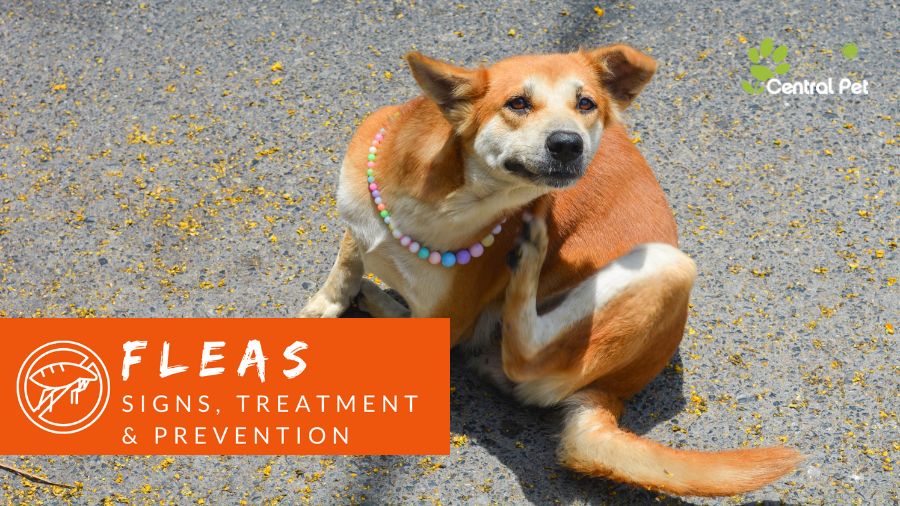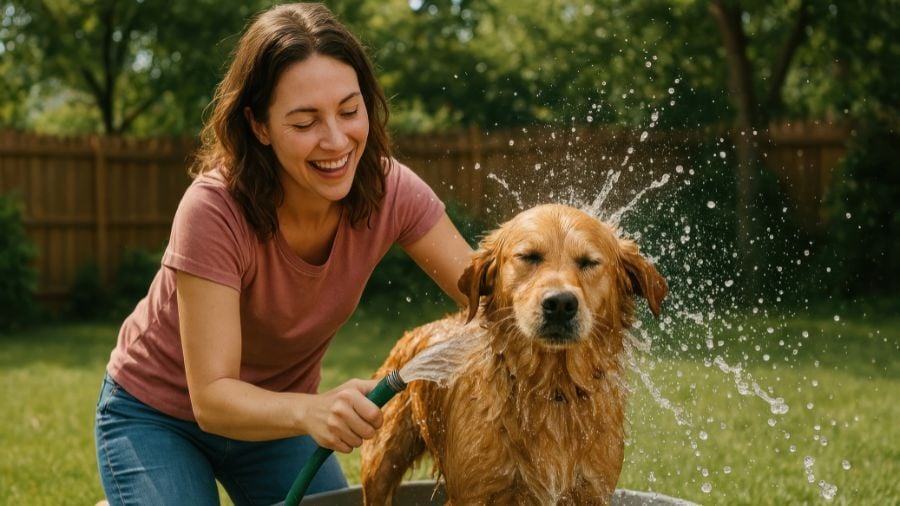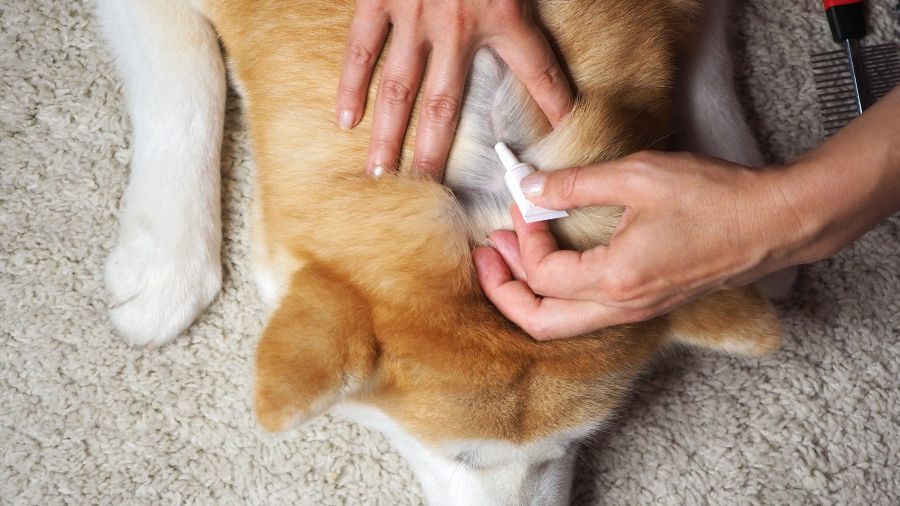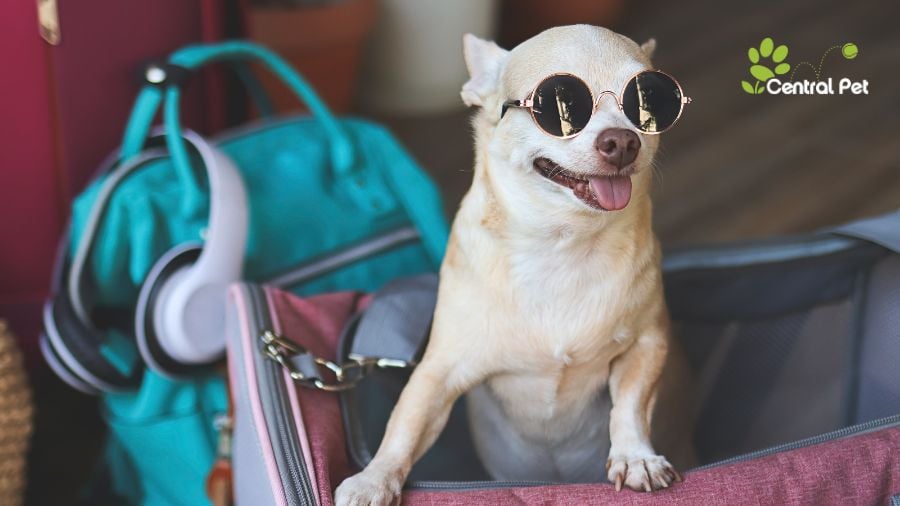Fleas can be a really big problem for dogs and their owners. Although prevention is the best defense against these parasites, it’s also important to be able to recognize the signs and symptoms of fleas so you can help your dog if necessary. Keep reading to learn more about how to detect if you have a flea problem and what you can do to get it under control.
Signs of a Flea Infestation
Because fleas are fairly common, every dog owner should be aware of the signs of a possible infestation. You may have a flea infestation if:
- Your dog is scratching and/or has red, irritated skin
- Your dog is losing their fur
- You can see the fleas or flea larvae
- You can see what the fleas have left behind (flea feces known as “flea dirt”)
How to Treat Fleas
Eliminate Fleas From Your Home
To remove fleas from both your house and your pet, you must attack the infestation at all four stages of a flea’s life. Destroying the eggs is particularly important. Killing the fleas living on your pet is equally important as they will continue to lay eggs and cause your pet discomfort.
When it comes to your home, here are steps you can take both inside and outside your home to eliminate and/or minimize fleas. In your home, vacuum regularly and thoroughly, making sure to clean the canister or dispose of the vacuum bag after every cleaning. Spraying floors and furniture with an aerosol flea product or fogging the area may also be necessary. Outside, treat your yard with a flea spray if your dog spends more than 5% of his or her time outdoors.
Eliminate Your Dog's Fleas
In regards to your dog, the sooner you act, the better. To eliminate fleas:
- Bathe your dog. While a bath isn’t enough to completely eliminate a flea infestation on your dog, it’s a good place to start. You can use a basic pet shampoo or a mild dishwashing liquid, followed up by a commercial flea dip if you choose. However, always be sure to read the directions carefully and check with your veterinarian before starting any new treatments.
- Comb your dog. After bathing, comb your dog with a flea comb.
- Administer an oral or topical treatment. There are many over-the-counter (OTC) medications available that can help eliminate fleas from your dog. If OTC meds don’t seem to be working, contact your veterinarian. The vet can prescribe an insecticidal treatment or administer medicines that will help relieve your dog's itching.
- Wash fabrics your dog has come in contact with. This includes dog bedding or any other cloth items that were on the floor. The wash won’t kill the fleas, but drying the items for a minimum of 30 minutes will. If your dog spends time on furniture, wash what you can and spray the rest.
Why Flea Control Matters and What You Can Do to Prevent Them
Not only can a flea infestation be chaos in your home, but fleas can also cause a wide variety of issues for your dog. Some of these include:
- Flea bite dermatitis is a specific allergy to flea saliva. This can lead to intense itching and scratching that leaves your dog's skin vulnerable to infection.
- Tapeworms. Tapeworms start out inside the flea and then grow inside your dog, resulting in an itchy butt and weight loss.
- Anemia, which low blood cell counts cause. The decrease in blood cell counts can be the result of fleas feeding too much on dogs (primarily puppies).
Keep in mind that fleas can be harmful to humans, too. In fact, humans can be infected with certain diseases that are carried by fleas, including the bubonic plague and cat scratch fever.
Flea Prevention Tips
To keep on top of fleas, you have to be proactive. Here are some prevention tips to consider:
- Treat your dog with flea preventative once a month
- Clean the floors and furniture in your home regularly
- Have your dog's fur cut shorter so fleas can be spotted easier
- Keep your lawn trimmed short so fleas won't have a hospitable environment to lurk in
- Talk to your vet about monthly oral drugs, topical preventatives, or flea collars
Fleas might only seem like a nuisance, but they are much more than that. To keep you and your dog safe, take the proper steps to prevent infestations. The better you are at prevention, the less you’ll have to worry about treating when fleas have gotten out of control.
If you have any questions about flea preventatives or treatments, please ask the dog experts at Central Pet in Tucson! Our retail team can answer any flea questions that you may have.
Central Pet's grooming services can help you stay on top of your dog's grooming schedule, including baths, hair cuts, and flea and tick dips, which are medicated baths that help remove fleas and ticks and soothe treatment of bug bites. Flea and Tick prevention medication and repellents can be purchased in-store at Central Pet.






